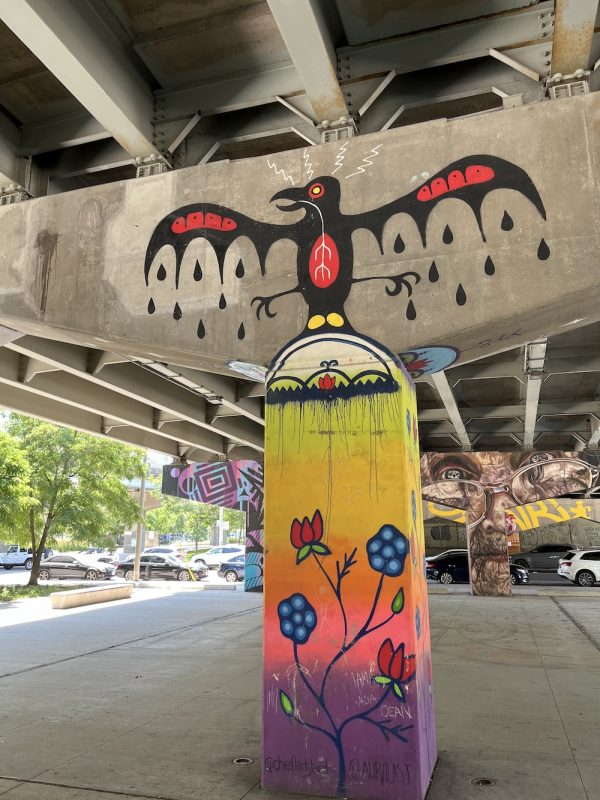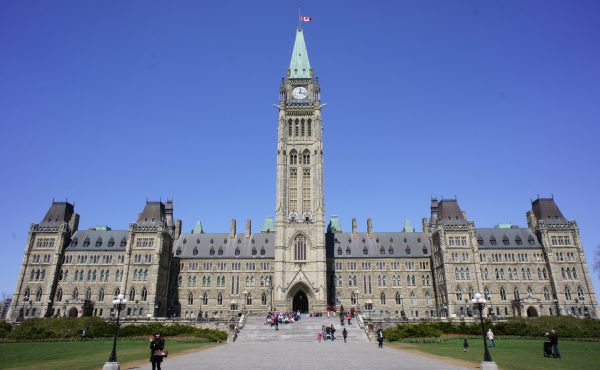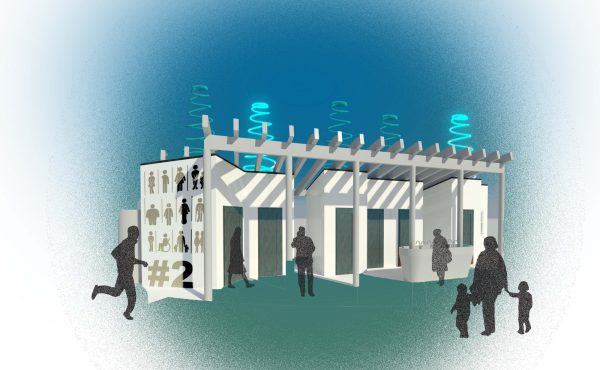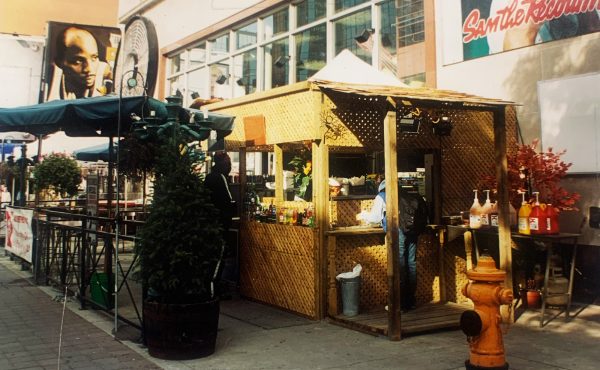We discovered new avenues of the city we would have never found unless we had a reason to be there. Many places were sitting right under my nose, not far at all from my apartment, that I never would have known existed. Now, thanks to First Story, we had a reason to explore and to learn. And you could, too.
First Story, an app that provides information about the Indigenous history of Toronto locations, gave us a destination, and that’s often all it takes to start exploring – an end. The beginning, middle, and epilogue were up to us.
That initial First Story journey, which I took with my mom, would inspire me to make further discoveries on my own using the app.
It’s been a hectic summer for me. With so much happening in my life, I haven’t been able to see my mom as much as I’d like. Normally, we’d swap visits regularly, but this summer, the times we’ve spent together have been few and far between.
So, when she came to visit me here in Toronto, I wanted to try something different. To go somewhere we hadn’t been before and have a new experience. And to share a bit of my life, which, at the moment, is working through my Master of Journalism at Toronto Metropolitan University.
My studying has included learning, through traditional knowledge, from Indigenous communities, and how it is crucial to include this knowledge and these voices in journalism.
The one-day excursion my mom and I were about to embark upon would lead me on a summer-long walking adventure around the city, discovering new neighbourhoods, meeting new people, and learning about Toronto’s indigenous history every step of the way.
Following a pleasant midtown lunch, my mom and I started walking and learning about Verna Patronella Johnston, whom we had no idea existed up until that day.
I heard about her through First Story.
First Story provides users access to original stories, photographs, archival documents, and audio and video clips pertaining to Indigenous history.
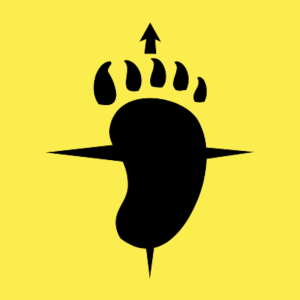
Available through the free Driftscape app, First Story allows us to explore history and events through the traditional knowledge of Indigenous communities. It’s a fantastic way to get to know the city through places of interest and self-guided audio tours. My mom and I discovered the location of Johnston’s home through First Story.
Johnston was an Ojibway author who worked tirelessly to help Indigenous youth in the city. She ran the first boarding house for Indigenous students run by an Indigenous person.
Once on Blythwood Road, Johnston gave a home to many Indigenous youths, providing housing to students who moved to Toronto to pursue post-secondary education. Johnston was even awarded Indian Woman of the Year by the Native Women’s Association in 1976.
First Story provided photos, a full-length article about Johnston’s life, and even an interview with her from 1982.
So, my mom and I thought to ourselves, let’s go check out the area where this incredible woman lived.
To get to Johnston’s home, we strolled along avenues of beautiful old homes that filled us both with a sense of calm and tranquillity, even though we were right in the heart of the city, steps away from Yonge Street and Lawrence Avenue.
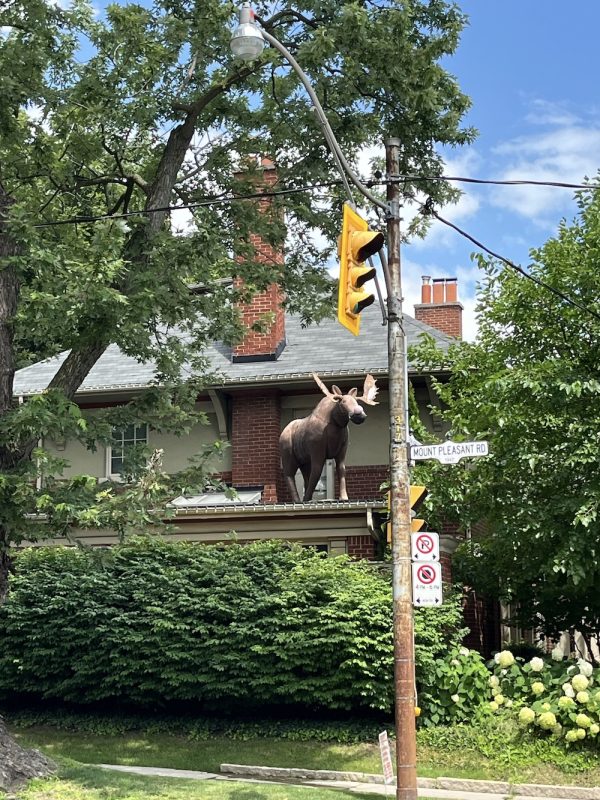
The mature, by our guesstimation at least 150-year-old, trees shaded us as we headed towards Johnston’s historic home. In these quiet neighbourhoods, we wondered what the city was like back when these mighty, verdant trees were mere saplings. And then what it was like before their seeds even took hold of the earth — thoughts we typically didn’t contemplate but were inspired to due to the nature of our current walk.
When we arrived at the location, sadly, the house, at least the one in the photo, wasn’t there. Still, that didn’t matter. We were in the area where it once stood proudly, and that was enough.
It wasn’t simply learning and trying something different that made our day so enjoyable. As my mom and I chatted along our journey, we’d suddenly stop and say, “What’s down that street? What’s that over there?” And because we were in no rush, we’d go and find out.
Because Driftscape has a built-in map, we were able to walk with confidence in the direction of our First Story destination without being too tethered to a specific route. This allowed us to make our own, unique trail to Johnston’s home. And when we inevitably deviated from the course, the map would regenerate, and we were able to find our way again, which gave us even more confidence to take the less-trodden path. It made for an exciting, exploratory day.
After Johnston’s location, we continued to explore the neighbourhood. This is how we came to discover the trails at Blythwood Ravine.
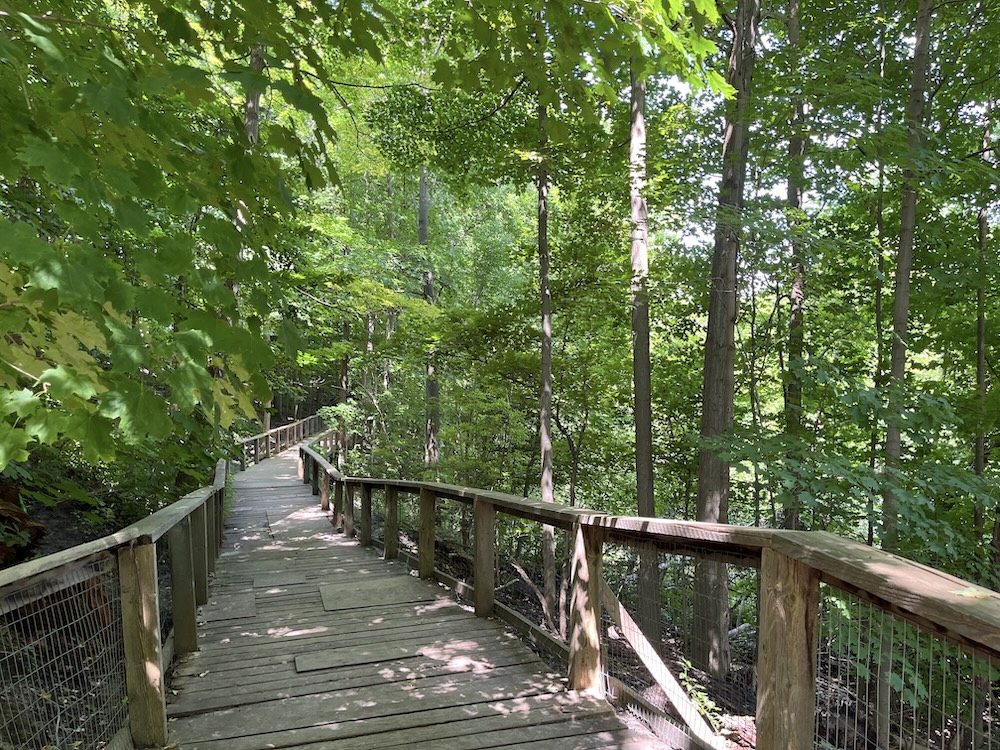
We were excited to find out that such a place existed here in Toronto. It was so close to my apartment, yet I had absolutely no idea it was there. I still wouldn’t know today if it hadn’t been for our First Story adventure.
Though this particular destination wasn’t a First Story location, because the app made us conscious of the natural landscape Toronto was founded upon and its Indigenous histories, we felt even more connected to the land and all the people who have inhabited it.
Having a previously unknown destination drew my mom and I out of our usual paths. We discovered new parts of the city just by the act of aiming for that destination – even when that destination had changed from what was featured in the app. We so often think about what the city is like today, but we easily lose sight of how the area was formed, through 13,000 years of Indigenous history.
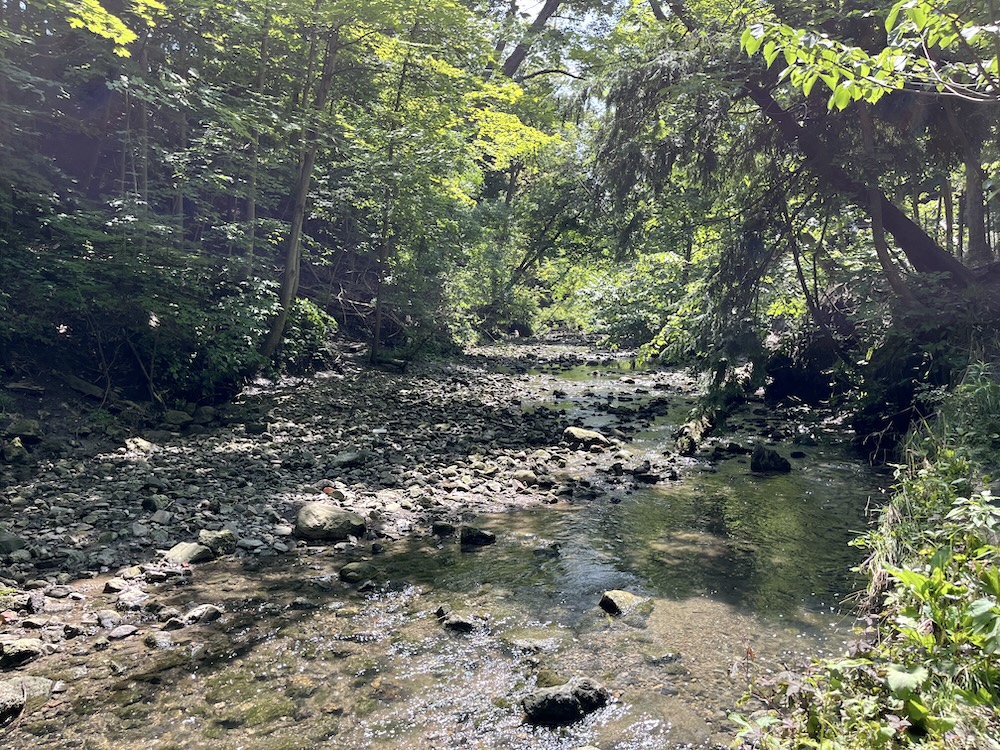
Following the trip I had made with my mom, I was inspired to go on more First Story walks around the city. This is how I learned about the Indigenous settlement on what is now the Allenby school site, located in the Lawrence Park community. This historical settlement dates all the way back to the 1400s, and was once a collection of longhouses.
It’s also how I discovered the story of the 10,500 – 11,000-year old footprints found in 1908 under Lake Ontario. The footprints were discovered just off Hanlan’s Point Beach when workers were digging a waterworks tunnel. Sadly, they have since been covered, entombed in concrete.
And it’s how I embarked on the incredible self-guided audio tour by Jon Johnson and Philip Cote that begins at Corktown Common and ends at Berczy Park. I recommend starting with this tour if you are new to First Story or Driftscape.
On this tour, you’ll get a sense of how the land looked before the City of Toronto, as we know it today, was developed. You’ll also learn what Indigenous communities called the areas, and about historic events, traditional knowledge, and where certain streets derived their names.
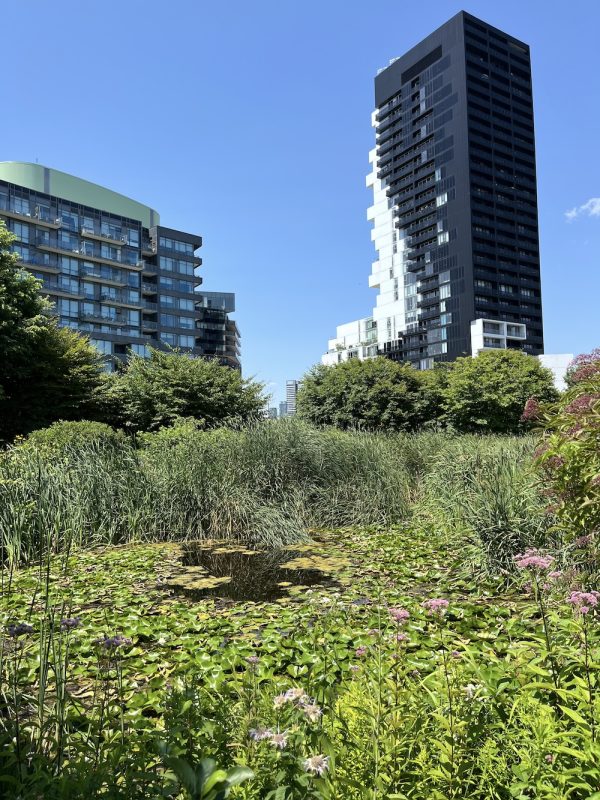
You’ll find out about Toronto’s first murder, actually a double homicide, which almost led to altering the course of history in Upper Canada and York; about where the name Jarvis Street came from; how Front Street used to be the original shoreline of Lake Ontario; and the Indigenous trail of Yonge Street.
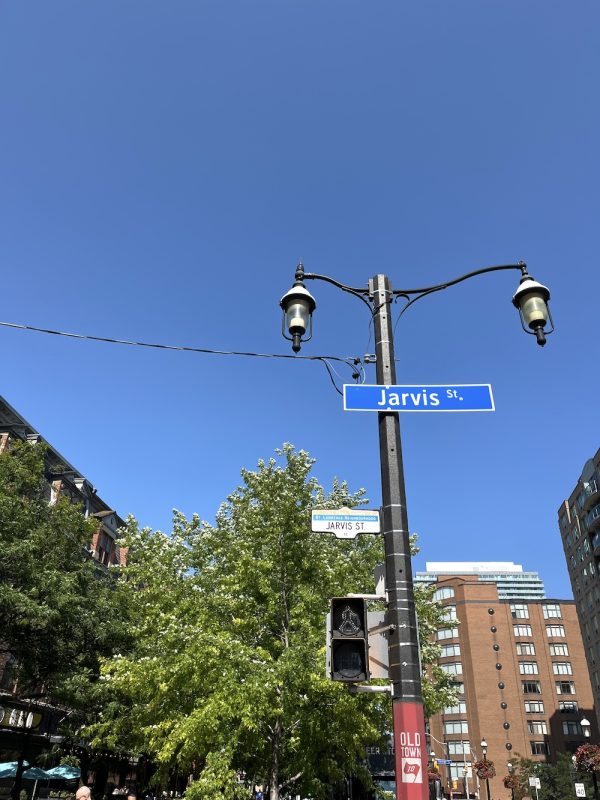
With summer coming to a close and autumn on the way, it’s the perfect time to get out and about our beautiful city. To go somewhere new, to learn something new, to walk down streets and avenues we know so well and think about how they were formed and named. To see the world through a different lens and consider Toronto’s rich, Indigenous past and present.
Often, we need a push to change our perspectives or deviate from our routines, or we don’t consider the expansive history of the places we live. We require a reason to go to a different part of town, or to spark our curiosity. Exploring the Indigenous histories through First Story could become your reason.
Images by Trent Weston unless otherwise noted.

